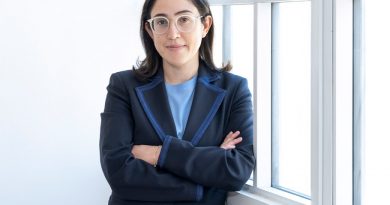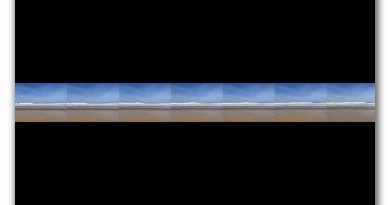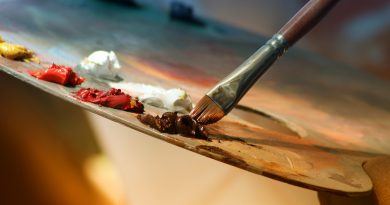Beneath the Surface, a group show curated by Lehmann Maupin Senior Director Isabella Icoz
Beneath the Surface, a group show curated by Lehmann Maupin Senior Director Isabella Icoz, brings together the work of Heidi Bucher, Alex Gardner, Lubaina Himid, Shirazeh Houshiary, Araba Opoku, and Calida Rawles—six artists who engage water as medium, metaphor, and artistic method.
For many of the artists in Beneath the Surface, water is a vehicle for the act of making, and the natural properties and movement of water define their processes and take shape on the canvas. For others, the presence of water creates metaphorical or literal opportunities for the exploration of cultural and personal histories, and rendering aquatic space becomes a means of constructing or deconstructing various identities. Across the exhibition, paint is diluted, canvases flooded, and brushes soaked; images are reflected, bodies submerged, and rivers forged. As a whole, the exhibition asks the viewer to consider water beyond the everyday, positioning it instead as a lens through which to consider these works. The artists in Beneath the Surface call attention to water as a life force, a resource, an inhabitable space, and a functional material.
Signature works by Alex Gardner, Lubaina Himid, and Calida Rawles depict images of water in order to explore the construction of identity and its intersection with history. In her most recent pastel works, Rawles continues her investigation of water as both a multifaceted physical material and a historically charged space for Black bodies. She seeks to revisit the cultural and historical trauma that surrounds water and the Black experience, reclaiming it as a space for healing and discovery. Here, Rawles depicts female bodies partially submerged in exquisitely rendered aquatic landscapes, allowing vistas of bubbles, ripples, refracted light, and expanses of blue and green to distort her figures and connect her subjects to one another. Painter Alex Gardner renders anonymous figures in bold color palettes, using stark linework against soft backgrounds to explore cross-cultural commonalities. His figures are devoid of faces, ages, and genders, leading viewers to inevitably project their own experiences onto the narratives conveyed by the body language in each work and participate in the active construction of the subject or protagonist. In the works on view, Gardner’s subjects handle and pour from a ceramic jug. The stream of water glows with a reflective iridescence as it descends from the figure’s hand, symbolizing both interpersonal connection and the fluidity of the self. In Lubaina Himid’s series Venetian Maps, the artist pays tribute to the water-bound city of Venice. Himid imagines the city’s canals as repositories of its secrets; their murky waters conceal lost or forgotten objects and bear witness to countless historical narratives—as well as the pollution and erosion caused by climate change and boat traffic. In Venetian Maps (Kings) (1997), Himid traces and reasserts the lineage of African leadership in the city, placing their images on playing cards and locating them on a map of a canal.
Heidi Bucher, Shirazeh Houshiary, and Araba Opoku employ water as integral to their medium or process of making, rendering images of water and capturing its effects. In her 1980s series Wasserzeichnung / Water drawings, Bucher uses gestural brushstrokes in watercolor and gouache to create “water still lifes.” She delves into the form and color of water itself—in a variety of blue hues, a soaked brush is pulled in arch or s-shaped motions in a single stroke across each composition, allowing the pigment to flow naturally over and soak into the paper surface. The resulting marks suggest gentle ripples and convey the transformative properties of water. Houshiary’s painting practice employs water in a similar fashion. She heavily dilutes her pigments and allows them to flow across her canvases as she manipulates their movements, shaking or tilting the surface to sway the fluid one way or another. The resulting images express the organic movement of water and unveil fissures or folds as spaces that inhabit our dreams, imaginations, and perceptions. In Styx (2018) and The River is Within Us (2015), Houshiary approaches the intangible and evanescent, articulating a metaphysical reality that lies beyond mere form and surface. Water is both medium and subject—the works acknowledge the element as crucial to our planet’s existence and simultaneously illuminate water’s ability to blur opposing states of being, merging transparency and opacity, surface and depth, presence and absence, signifier and signified. In Araba Opoku’s practice, the artist utilizes water as a medium to create imagery that both considers water as a sociopolitical resource and mimics its physical effects. Her diluted acrylic washes and natural drips of paint imbue her paintings with a reflective, rippled quality, which the artist contrasts through layers of grid-like line work. Based in Accra, where access to water is often inhibited, Opoku’s work stems from highly personal experience. Her paintings emphasize the tension between water’s freely uninhibited nature and humankind’s regulation of water supplies, establishing the element as a source of both life and suffering.
Together, the artists in Beneath the Surface seek to locate new and complex definitions of water, full of material and conceptual contradictions. They use water to image, mimic, and interrogate itself, contextualizing it as a repository of history, a crucial life-source plagued by inequitable access, and a vital material for creative production. Above all, the exhibition pursues the utopian potential offered by water; Beneath the Surface gestures towards a world where all histories are confronted, identities embraced, and resources shared.




